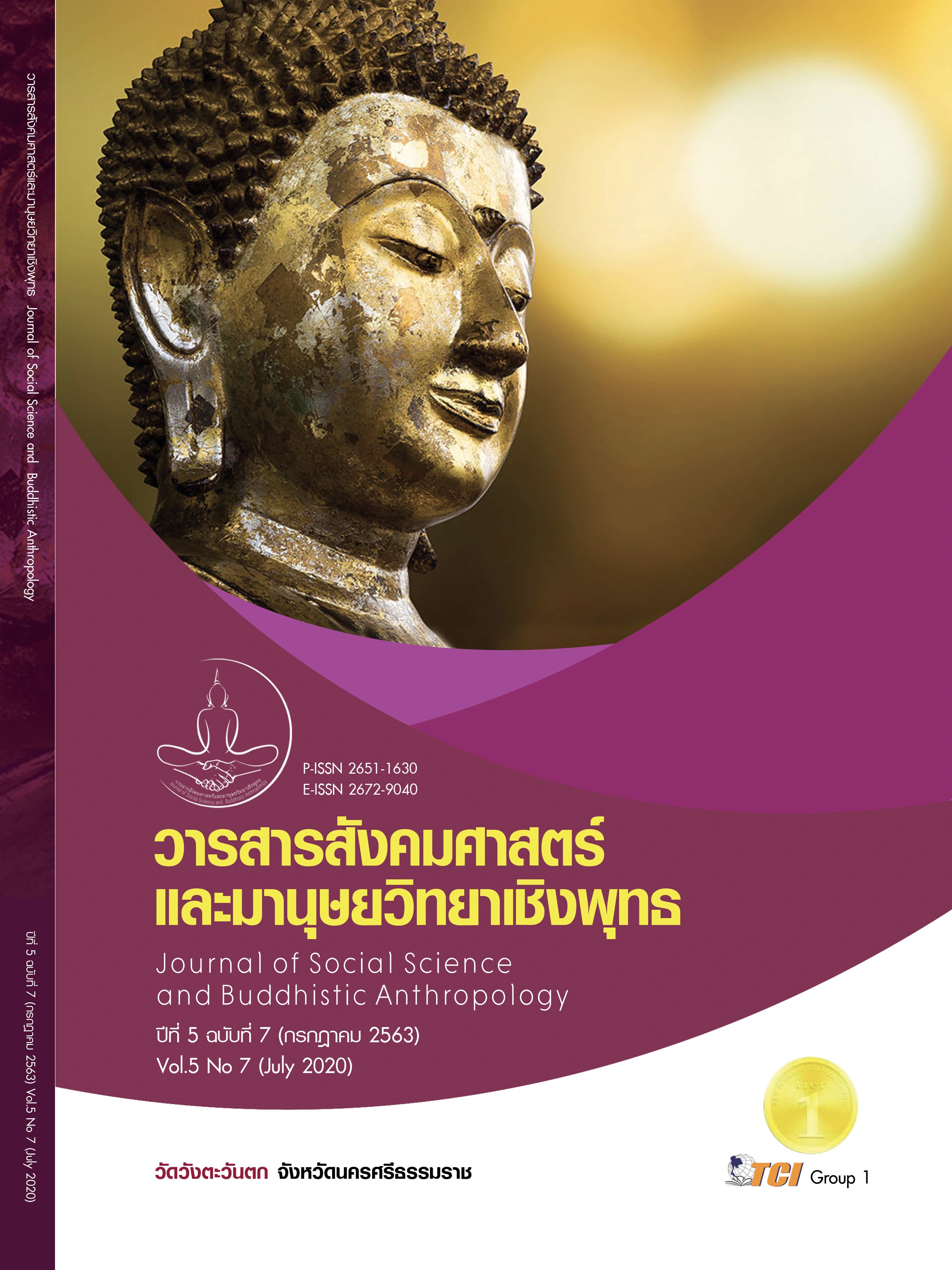THE INFLUENCE OF ELECTRONIC COMMERCE MARKET AND ONLINE PURCHASE BEHAVIOR OF HERBAL SOAP
Keywords:
Causal Relationship Model, Electronic Commerce Market, Online Consumer Behavior, Herbal SoapAbstract
This article aimed to 1) Study marketing mixed factors from consumer's point of view, acceptance of technology, online consumer behavior, and post-purchase behavior of herbal soap online market. 2) Inspect the consistency of causal relationship model of E-commerce market that affected the behavior of online herbal soap consumers. 3) Present guidelines for herbal soap sales development on ready-made platforms. Research Methodology and instruments were divided into 2 parts. The qualitative part was by interviewing 15 main data providers and using content analysis. The quantitative part was by questionnaires via system collecting data from 400 online-shops customers and using analysis of frequency, percentage, arithmetic mean, standard deviation, skewness, kurtosis, and structural equation model. The results of the research found that the sample gave importance to marketing mix at a high level ( = 4.03), accepted technology at a high level (
= 4.06), had online consumer behavior at the highest level (
= 4.30), and had post-purchase behavior for herbal soap on E-commerce market at the highest level (
= 3.74). The consistency of the causal relationship model revealed the Overall Model Fit Measure at 2.759, with a good predicting ability at 89.4% and causal relationship characteristic of a statistical significance of 0.05. And found that every mixed factor accepted the hypothesis. The guidelines for the development was that the sellers should pay attention to pictures and messages presentation to make sure they are complete and interesting, along with product guarantee and frequently-asked informations on the front page of the shop and persuade customers to write reviews. Therefore the sellers should also give importance to previous customers informations and each of their needs and use them to frequently develop communication information on their shop's pages.
References
กระทรวงดิจิทัลเพื่อเศรษฐกิจและสังคม. (2562). รายงานสถิติการทำธุรกิจพาณิชย์อิเล็กทรอนิกส์ประจำปี 2562. เรียกใช้เมื่อ 3 ตุลาคม 2562 จาก https://www.mdes.go.th/home
กันตาร์ เวิร์ลดพาแนล. (2560). ตลาดรวมสบู่ก้อนสมุนไพร. เรียกใช้เมื่อ 25 มีนาคม 2561 จาก https://www.ryt9.com/s/prg/1929742
กัลยา วาณิชย์บัญชา. (2549). สถิติสำหรับงานวิจัย. (พิมพ์ครั้งที่ 2). กรุงเทพมหานคร: โรงพิมพ์จุฬาลงกรณ์มหาวิทยาลัย.
เฉินจุน หลิว. (2556). ประสิทธิผลของการตลาดเชิงดิจิทัลต่อแบรนด์เบอร์เบอรี่ในสาธารณรัฐประชาชนจีน. กรุงเทพมหานคร: จุฬาลงกรณ์มหาวิทยาลัย.
ณัฐพล ใยไพโรจน์. (2558). อัพเดทเทรนด์การตลาดออนไลน์ 2015. (พิมพ์ครั้งที่ 1 ). กรุงเทพมหานคร: ไอซีดี พรีเมียร์.
นงลักษณ์ วิรัชชัย. (2555). ความสัมพันธ์โครงสร้างเชิงเส้น (LISREL) สถิติวิเคราะห์สำหรับการวิจัยทางสังคมศาสตร์และพฤติกรรมศาสตร์. (พิมพ์ครั้งที่ 1 ) . กรุงเทพมหานคร: โรงพิมพ์จุฬาลงกรณ์มหาวิทยาลัย.
นิเวศน์ ธรรมะ. (2562). ประสบการณ์ซื้อออนไลน์ที่ส่งผลต่อความตั้งใจซื้อสินค้าออนไลน์. วารสารรังสิตบัณฑิตศึกษาในกลุ่มธุรกิจและสังคมศาสตร์, 5(1), 62-71.
มนตรี พิริยะกุล. (2553). ตัวแบบเส้นทางกำลังสองน้อยที่สุดบางส่วน. ใน เอกสารการประชุมวิชาการสถิติและสถิติประยุกต์ครั้งที่ 11. มหาวิทยาลัยเชียงใหม่.
มาร์เก็ตเธียร์. (2558). ส่วนแบ่งตลาดสบู่. เรียกใช้เมื่อ 23 มีนาคม 2559 จาก http://marketeer.co.th/2015/11/japan-food-1115
ศูนย์วิจัยกสิกรไทย. (2562). สมุนไพรออนไลน์. เรียกใช้เมื่อ 5 มกราคม 2562 จาก https://www.kasikornresearch.com
Chu, A. Z-C. & Chu, R. J-C. (2011). The intranet's role in newcomer socialization in the hotel industry in Taiwan – technology acceptance model analysis. The International Journal of Human Resource Management, 22(5), 1163-1179.
Conferenceseries. (2018). Herbals Situation. 4th Global summit on Herbals and Traditonal Medicine Osaka,Japan. Retrieved January 10, 2019, from from http://www.herbal.global-summit.com/2018/
Kotler, P. (2003). Marketing Management. (11th ed). New Jersey: Prentice-Hall.
Richard, M. O. & Chebat, J. C. (2016). Modeling online consumer behavior:Preeminence of emotions and moderating influences of need for cognition and optimal stimulation level. Journal of Business Research, 69(2), 541–553.
Saris, W. E., & Stronkhorst, L. H. (1984). Causal Modelling in Nonexperimental Research. Amsterdam: Sociometric Research Foundation.
Shimizu, K. (2009). Symbiotic Marketing Strategy. (4th edition). Japanese: Souseisha Book Company.








